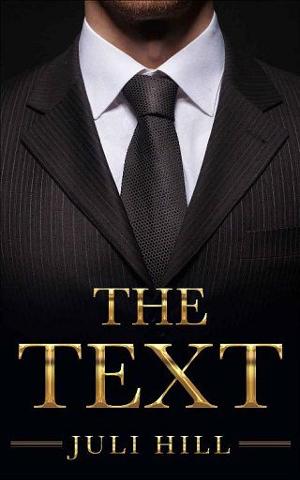CHAPTER 5
AS I’D PREDICTED, AS soon as Mahoney learned that Ryan Malcomb was dead, he decided to hold off on a deep dive into the late billionaire and his company.
“I spoke with Director Hamilton earlier,” Ned told me in the car after he picked me up at home. “Franklin’s case is our top priority.”
“Agreed,” I said. “Hard to believe Malcomb’s dead, though.”
“Yeah. What’s a guy in a wheelchair doing up on a mountain road alone in a snowstorm, even if he’s driving a handicap van?”
“The Post article said he was interested in buying property up there,” I said. “The Independence Mountain range is mostly U.S. Forest Service land, but evidently there’s a big landlocked place up there he wanted.”
“All the billionaires are buying up big ranches out west. I read a piece about it in the Wall Street Journal . They’re all looking for hard assets.”
“Good to know for when I make a billion. Where are we going, by the way?”
“DC Metro headquarters. I contacted them first thing. They’re pulling together footage of Franklin’s car between the courthouse and her home.”
“How do they know the route?”
“Pearson, the driver, was running Waze on her phone, which was still active and linked by a USB cable to the car’s onboard computer when we arrived on the scene. We know exactly how they went to Alexandria.”
Quinn Davis, a Metro PD sergeant who specialized in video surveillance, met us in the lobby, and took us to a control room where a team of eight people were monitoring cameras all over the nation’s capital.
“We’ve got your car all the way into Alexandria,” Davis said. “No CCTV cameras in the judge’s neighborhood, though.”
“We’ll take what we can get,” Mahoney said.
Davis called up the footage. We watched the Cadillac sedan leave the courthouse parking annex, take a right on C Street, then another right onto Third. South of Pennsylvania Avenue, Third was blocked off for construction, and Pearson started driving side roads, angling west toward Fourteenth Street and the bridge to Northern Virginia.
When the town car was crossing Seventh on Madison Drive, Mahoney said, “Stop. Back it up. There.”
Davis froze the footage on the town car as it sat at the traffic light. You could see Agnes Pearson clearly in the streetlamp glow.
“See the gray Dodge Durango, three cars back?” Mahoney said. “It’s been following her three cars back and turn for turn the entire time.”
“Good catch,” Davis said, typing. “Let’s slightly expand the time frame to include our Dodge Durango.”
A few minutes later, she stopped typing, and the footage of the Cadillac town car continued along with the Durango, which stayed three or four cars back on Fourteenth Street, across the bridge, and down the George Washington Memorial Parkway to Alexandria. But when Pearson left the parkway at West Abingdon Drive, the gray Dodge SUV drove on.
“We lose the town car just ahead here,” Davis said, and froze the picture.
I looked at the time stamp on the video and did the math in my head.
“We lost them at six twenty-two p.m.,” I said. “It could not have taken more than three minutes for them to reach Franklin’s house. Can we get cell transmissions around this time? See if there was a call from that Dodge to the killer?”
“Maybe,” Mahoney said. “I’ll try.” His cell phone buzzed with a text. He looked at it, said, “Well, this is good.”
“What’s that?”
“Alexandria police canvassed the neighborhood first thing this morning. They got footage from several doorbell cameras. They’ve got the shooter.”
“That definitely helps,” I said.
“Have them send it here,” Davis said, and gave him her secure email address.
“Meanwhile, can you reverse the footage?” I asked. “See if we can get a good look at the Durango’s license plate?”
While Mahoney contacted the Alexandria police, Davis rolled the footage we had backward. We quickly determined by the black lettering on a reflective white background that the plate was from Maryland. But the plate lights were dim at best. All we could make out was 9-UU.
Before Davis could check the Maryland DMV, the video from the Alexandria police came in. She loaded it and hit Play, and we were suddenly looking out at Judge Franklin’s street from a house on the corner.
At 6:24:50 p.m., a blond woman wearing a reflective vest, headlamp, neck gaiter, safety glasses, and a small hydration pack ran by. Seconds later, at 6:24:58, the Cadillac rolled past the camera.
The footage cut to a second doorbell camera, more wide-angled than the first, positioned cattycorner to and west of Franklin’s house. At 6:25:10, the Cadillac pulled into the drive at the far right of the frame. Pearson exited the car and went around the back to open Franklin’s door. At 6:25:16, as Pearson passed the trunk, the runner appeared and cut diagonally across the street.
“Pack is off and in her left hand,” I said.
When she hit the sidewalk, Mahoney said, “She’s got a gun.”
We saw the whole thing. The killer dropped the pack beside her on the sidewalk and adopted a classic combat-shooting stance, both hands on the suppressed pistol, squared off to the target and slightly crouched. She said something that caused the judge and her driver to turn, shot Franklin twice in the face and Pearson twice in the back as she tried to escape.
Then she calmly picked up the pack and her spent shells, put the gun with the shells in the pack, and put the pack back on. With her left hand, she pushed against her neck as if to crack it and jogged off at 6:25:28.
The footage ended.
“We don’t know where she came from or went afterward?” I asked.
“That’s all they’ve sent us so far,” Mahoney said.
“It’s phenomenal. Just wish we could see her face without the glasses, headband, and neck gaiter. Do me a favor, Sergeant Davis?”
“Sure, Dr. Cross, anything.”
“Google ‘Professor Willa Whelan, George Washington University Law School.’”
Davis did and up popped a picture of a pretty blond woman in her forties, very fit, who was lecturing a group of students in an amphitheater. Below was a link to a faculty bio. The sergeant clicked on it and I read that, like Emma Franklin, Whelan had attended Harvard Law School; they had been in the same class. After graduation, Whelan had done a clerkship with a judge in the Tenth Circuit Court of Appeals, worked ten years as an assistant U.S. attorney in Little Rock, then joined the faculty of GW.
I read all the way to the bottom and smiled at the last line, which I read to the others: “‘And in her free time, Professor Whelan enjoys running and competitive shooting.’”
 Fullepub
Fullepub 



